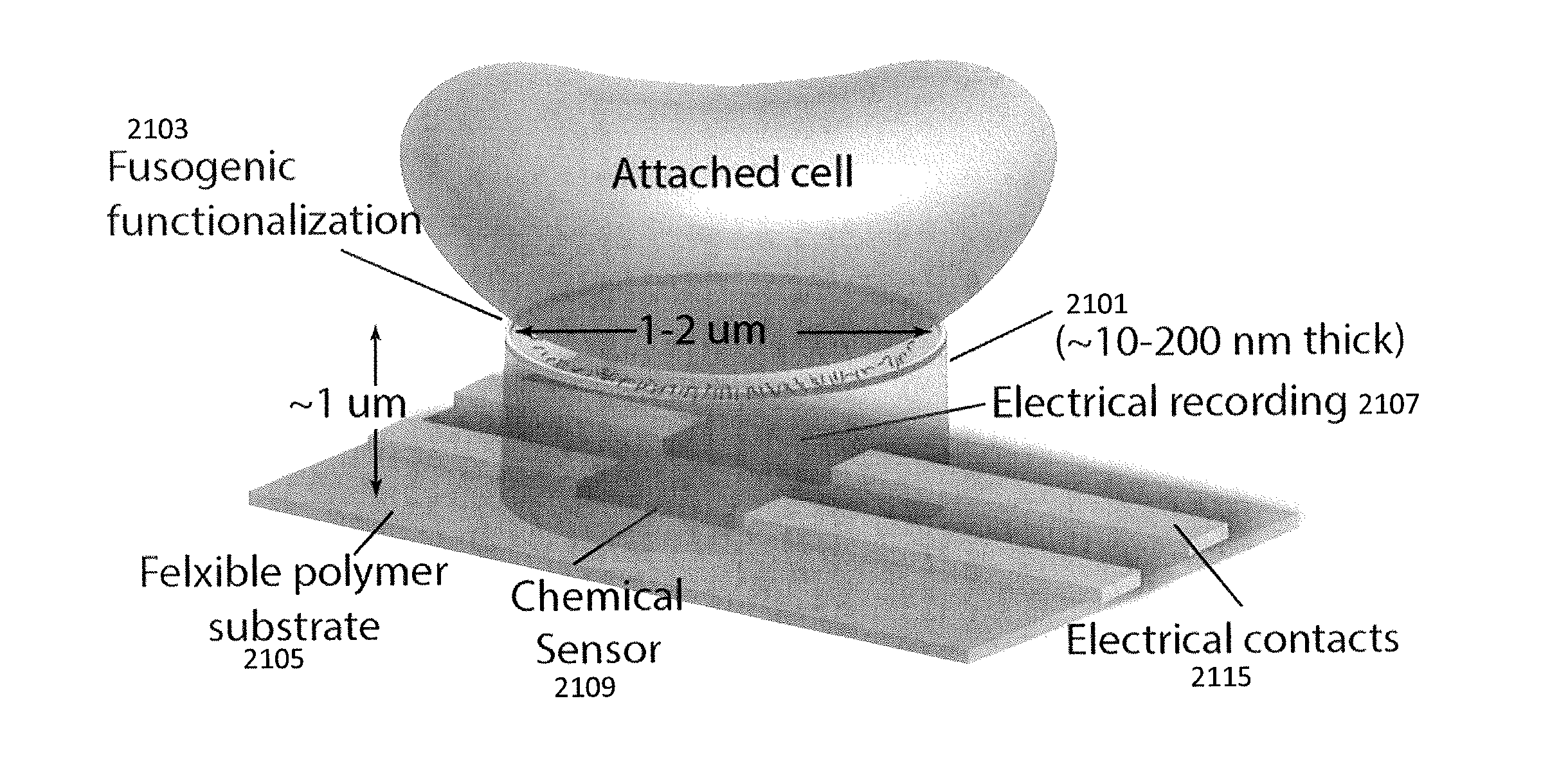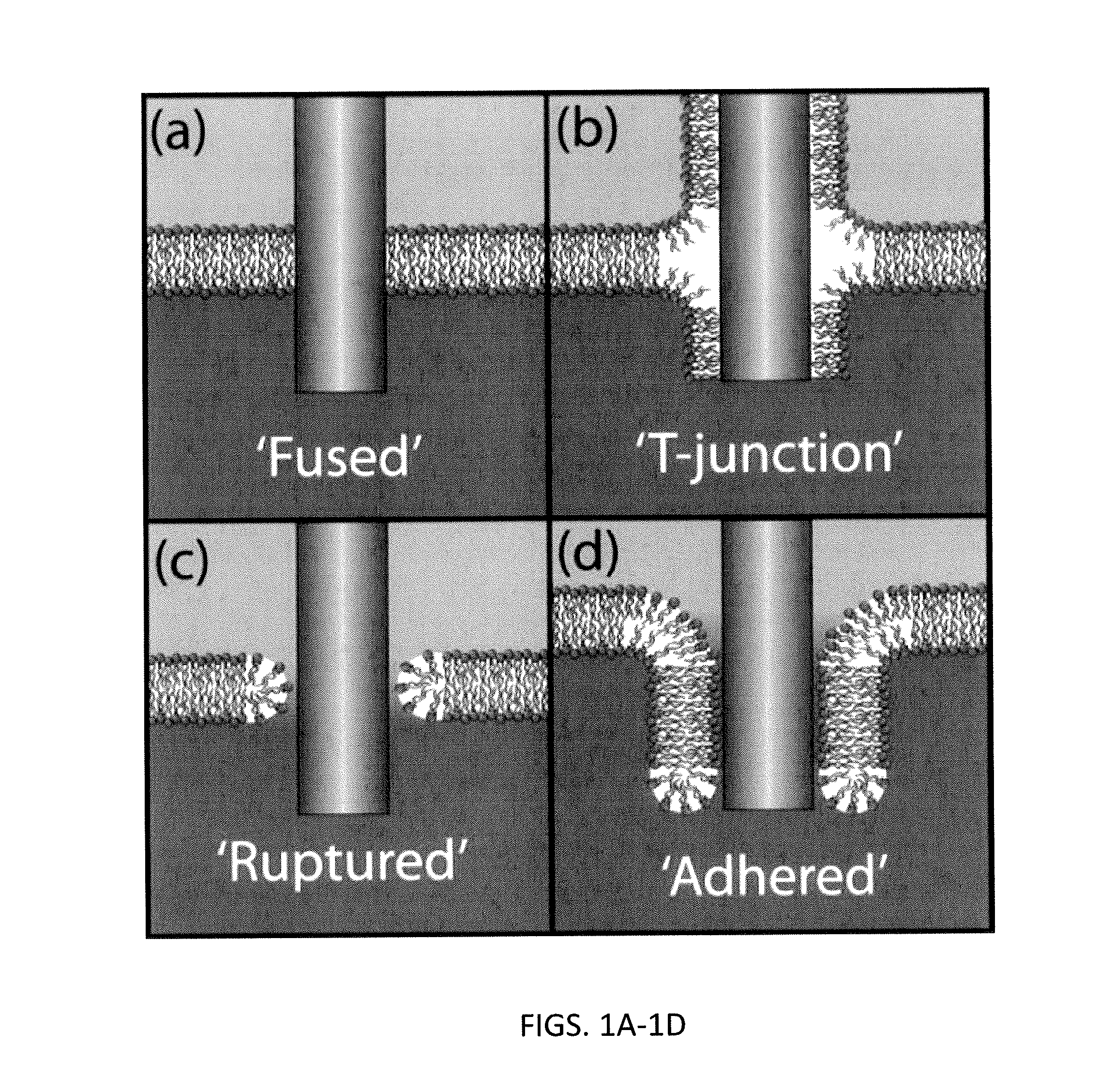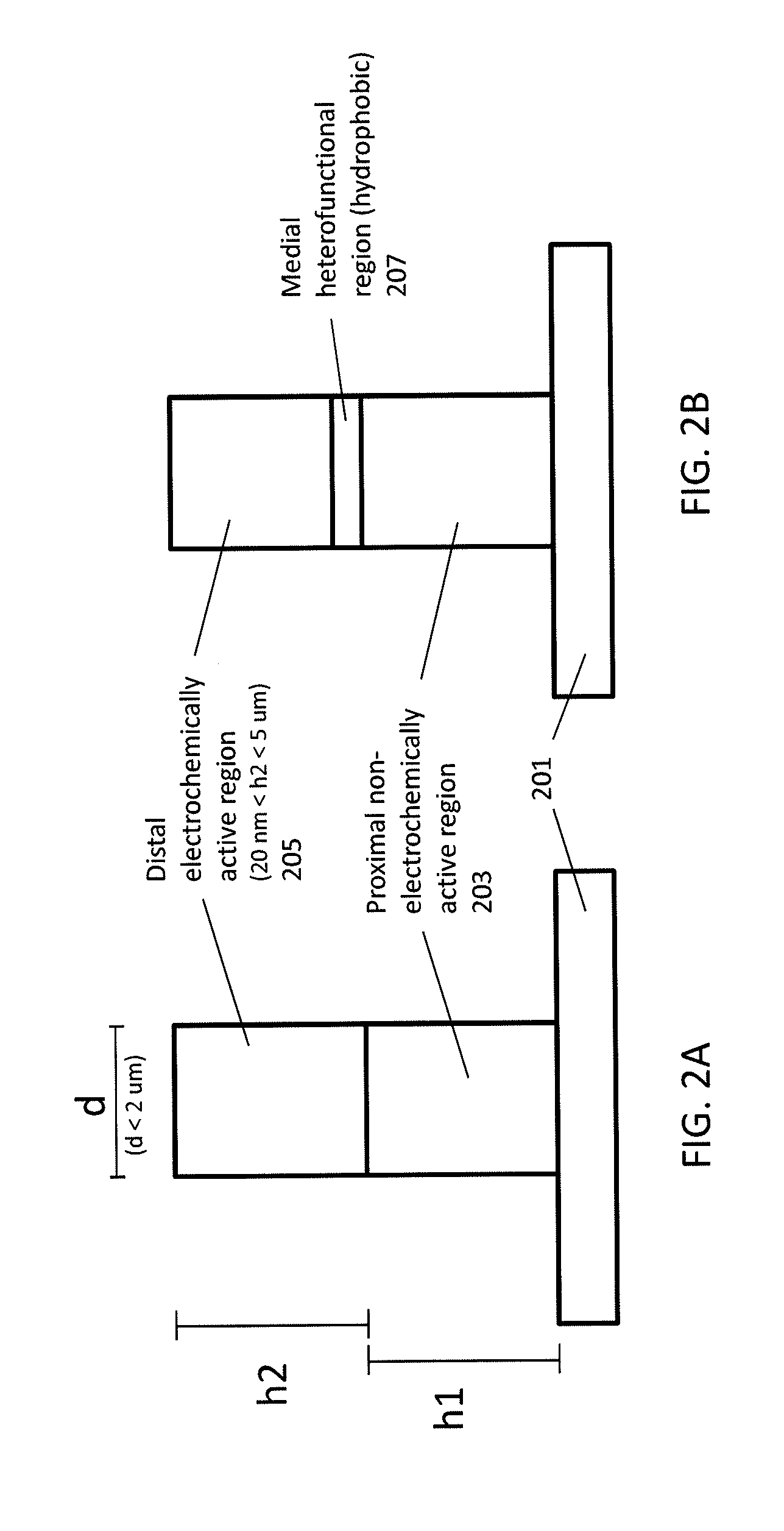Devices and methods for long-term intracellular access
a long-term intracellular and cell technology, applied in the field of nano-scale devices, can solve the problems of difficult relationship with man-made biomaterials, inability to understand the interface formed between the interior edge of the membrane and the material surface, and less study of the bridging across the cell membrane itsel
- Summary
- Abstract
- Description
- Claims
- Application Information
AI Technical Summary
Benefits of technology
Problems solved by technology
Method used
Image
Examples
example 1
[0120]Here we present a chip-based device including a plurality of nanoscale probe electrodes formed as solid-state metallic nanoscale electrodes that spontaneously fuse with the cell membrane to form gigaohm seals. Instead of relying upon destructive formation of membrane holes and serendipitous surface adhesion, these metallic electrodes spontaneously insert into the hydrophobic membrane core by mimicking the hydrophobic banding of transmembrane proteins, forming a well-defined bioinorganic lateral junction. For example, FIG. 3A-3B schematically illustrates attachment of a cell to the probe electrodes described herein. These “stealth” probes consist of hydrophilic posts with a 5-10 nm hydrophobic band (medial heterofunctional region) formed by molecular self-assembly onto the exposed edge of a Au layer. Due to hydrophobic interactions between the band and the lipid membrane core, a tight interface impermeable to polar molecules and charged ions is formed between the probe and the ...
example 2
[0127]As mentioned above, some variation of nanoscale probes may include a medial heterofunctional region that is more hydrophobic than adjacent regions on the probe and allow for insertion of the probe into the lipid membrane. Here we demonstrate that by replicating the nanometer-scale hydrophilic-hydrophobic-hydrophilic architecture of transmembrane proteins in an artificial nanoscale probe, the probe can be made to spontaneously insert and anchor within the lipid bilayer core, forming a high-strength interface. These nanometer-scale hydrophobic bands are fabricated on metallic probes by functionalizing the exposed sidewall of an ultrathin evaporated Au metal layer rather than by lithography. Penetration and adhesion forces for butanethiol and dodecanethiol functionalized probes were directly measured using atomic force microscopy (AFM) on thick stacks of lipid bilayers to eliminate substrate effects. The penetration dynamics were starkly different for hydrophobic versus hydrophil...
example 3
[0151]In variations of probes (e.g., nanoscale probes) including a medial heterofunctional region, the thickness of the heterofunctional region (which may be a band or annular region) may be selected to enhance the interaction with the membrane into which the probe is to be inserted. In this example we describe the role of nanoscale patterning on the strength of biomembrane-inorganic interfaces. AFM measurements show that inorganic probes functionalized with hydrophobic bands with thicknesses complimentary to the hydrophobic lipid bilayer core exhibit strong attachment in the bilayer. As hydrophobic band thickness increases to 2-3 times the bilayer core the interfacial strength decreases, comparable to homogeneously hydrophobic probes. Analytical calculations and molecular dynamics simulations predict a transition between a ‘fused’ interface and a ‘T-junction’ that matches the experimental results, showing lipid disorder and defect formation for thicker bands. These results show tha...
PUM
| Property | Measurement | Unit |
|---|---|---|
| height | aaaaa | aaaaa |
| height | aaaaa | aaaaa |
| diameter | aaaaa | aaaaa |
Abstract
Description
Claims
Application Information
 Login to View More
Login to View More - R&D
- Intellectual Property
- Life Sciences
- Materials
- Tech Scout
- Unparalleled Data Quality
- Higher Quality Content
- 60% Fewer Hallucinations
Browse by: Latest US Patents, China's latest patents, Technical Efficacy Thesaurus, Application Domain, Technology Topic, Popular Technical Reports.
© 2025 PatSnap. All rights reserved.Legal|Privacy policy|Modern Slavery Act Transparency Statement|Sitemap|About US| Contact US: help@patsnap.com



